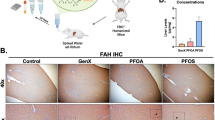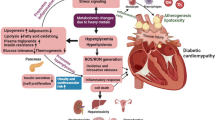Abstract
Objective
The aim of this study was to study the effect of Ginkgo biloba extract (EGb761) on metabolism of aflatoxin B1 (AFB1) in Wistar rats.
Methods
Seventy one Wistar rats were assigned at random to groups A, B and C. Rats in groups A, B were injected with AFB1 (intraperitoneal, 100–200 μg/kg body weight, 1–3 times/week). Group C was normal control. Rats in group B were fed in food with EGb761, while rats in groups A, C were given normal food. Blood samples were collected and liver biopsies were performed on the 14th, 28th and 42nd week. All the rats were sacrificed on the 64th week. The incidence of hepatocarcinoma was investigated. The hepatic phase I drug-metabolizing enzyme Cytochrome-P450 (CYP450) and phase II metabolizing enzyme glutathione S-transferase (GST) were analyzed with spectrometry. Serum AFB1-lysine adduct levels were assessed with high performance liquid chromatography (HPLC). The expression of 8-hydroxydeoxyguanosine (8-OHdG) was measured with immunohistochemistry.
Results
The incidence of hepatocellular carcinoma (HCC) in group B was significantly lower than that in group A (26.92% vs 76.00%, P < 0.001). No HCC developed in group C. EGb761 showed no effects on the activities of CYP450 and GST in rat liver tissues. The level of AFB1-lysine adduct reached the peak (4356.01 pg/mg albumin) at the 14th week in group A. EGb761 significantly inhibited the formation of AFB1-lysine adduct in serum by 13.07% at the 14th week (P = 0.033), and 73.63% at the 42nd week (P = 0.002). The expression of 8-OHdG protein in rat liver tissues in group B was significantly lower than that in group A at the 28th, 42nd, and 64th week (P < 0.05).
Conclusion
The main mechanism underlying the effect of EGb761 in blocking hepatocarcinogenesis induced by AFB1 may not be fully attributable to its influence on the activity of liver phase I and phase II metabolizing enzymes. EGb761 inhibits the production of AFB1-lysine adducts, decreases the expression of 8-OHdG protein, and finally alleviates the DNA oxidative injury, which may be one of the mechanisms for the effects of EGb761 in inhibiting or delaying AFB1-induced hepatocarcinogenesis.
Similar content being viewed by others
References
Kensler TW, Egner PA, Wang JB, et al. Chemoprevention of hepatocellular carcinoma in aflatoxin endemic areas. Gastroenterology, 2004, 127: 310–318.
Chen WQ, Zou XN, Zhang SW. Analysis of liver cancer geographical characteristics in Chian. J Pract Oncol (Chinese), 2008, 22: 201–203.
Duan XX, Su JJ, Wang Y, et al. Impact of Ginkogo biloba leaves on the diethylnitrosamine-induced liver cancer. Chin Cancer (Chinese), 2006, 15: 544–546.
Pineau P, Marchio A, Battiston C, et al. Chromosome instability in human hepatocellular carcinoma depends on p53 status and aflatoxin exposure. Mutat Res, 2008, 653: 6–13.
Chen MW, Cao J, Su JJ, et al. Dynamic change of signal transduction of extracellular signal regulated kinase during hepatocarcinogenesis induced by aflatoxin B1 in rats. Tumour (Chinese), 2009, 29: 707–710.
Johnson DN, Egner PA, Obrian G, et al. Quantification of urinary aflatoxin B1 dialdehyde metabolites formed by aflatoxin aldehyde reductase using isotope dilution tandem mass spectrometry. Chem Res Toxicol, 2008, 21: 752–760.
Simonich MT, Egner PA, Roebuck BD, et al. Natural chlorophyll inhibits aflatoxin B1-induced multi-organ carcinogenesis in the rat. Carcinogenesis, 2007, 28: 1294–1302.
Tang L, Guan H, Ding X, et al. Modulation of aflatoxin toxicity and biomarkers by lycopene in F344 rats. Toxicol Appl Pharmacol, 2007, 219:10–17.
Kamdem LK, Meineke I, Gödtel-Armbrust U, et al. Dominant contribution of P450 3A4 to the hepatic carcinogenic activation of aflatoxin B1. Chem Res Toxicol, 2006, 19: 577–586.
Primiano T, Egner PA, Sutter TR, et al. Intermittent dosing with oltipraz: relationship between chemoprevention of aflatoxin-induced tumorigenesis and induction of glutathione S-transferases. Cancer Res, 1995, 55: 4319–4324.
Shen HM, Ong CN, Shi CY. Involvement of reactive oxygen species in aflatoxin B1-induced cell injury in cultured rat hepatocytes. Toxicology, 1995, 99: 115–123.
Mukherjee B, Das T, Ghosh S, et al. Changes in the antioxidant defense and hepatic drug metabolizing enzyme and isoenzyme levels, 8-hydroxydeoxyguanosine formation and expressions of c-raf.1 and insulin-like growth factor II genes during the stages of development of hepatocellular carcinoma in rats. Eur J Cancer Prev, 2007, 16: 363–371.
Valavanids A, Vlachogianni T, fiotakis C. 8-hydroxy-2-deoxyguanosine (8-OHdG): a critical biomarker of oxidative stress and carcinogenesis. J Environ Sci Health C Environ Carcinong Ecotoxicol Rev, 2009, 27: 120–139
Author information
Authors and Affiliations
Corresponding author
Rights and permissions
About this article
Cite this article
Hao, Y., Su, J., Ou, C. et al. Effects of Ginkgo biloba extract on expression of biomarkers during aflatoxin B1-induced hepatocarcinogenesis in Wistar rats. Chin. -Ger. J. Clin. Oncol. 11, 261–265 (2012). https://doi.org/10.1007/s10330-012-0967-z
Received:
Revised:
Accepted:
Published:
Issue Date:
DOI: https://doi.org/10.1007/s10330-012-0967-z




